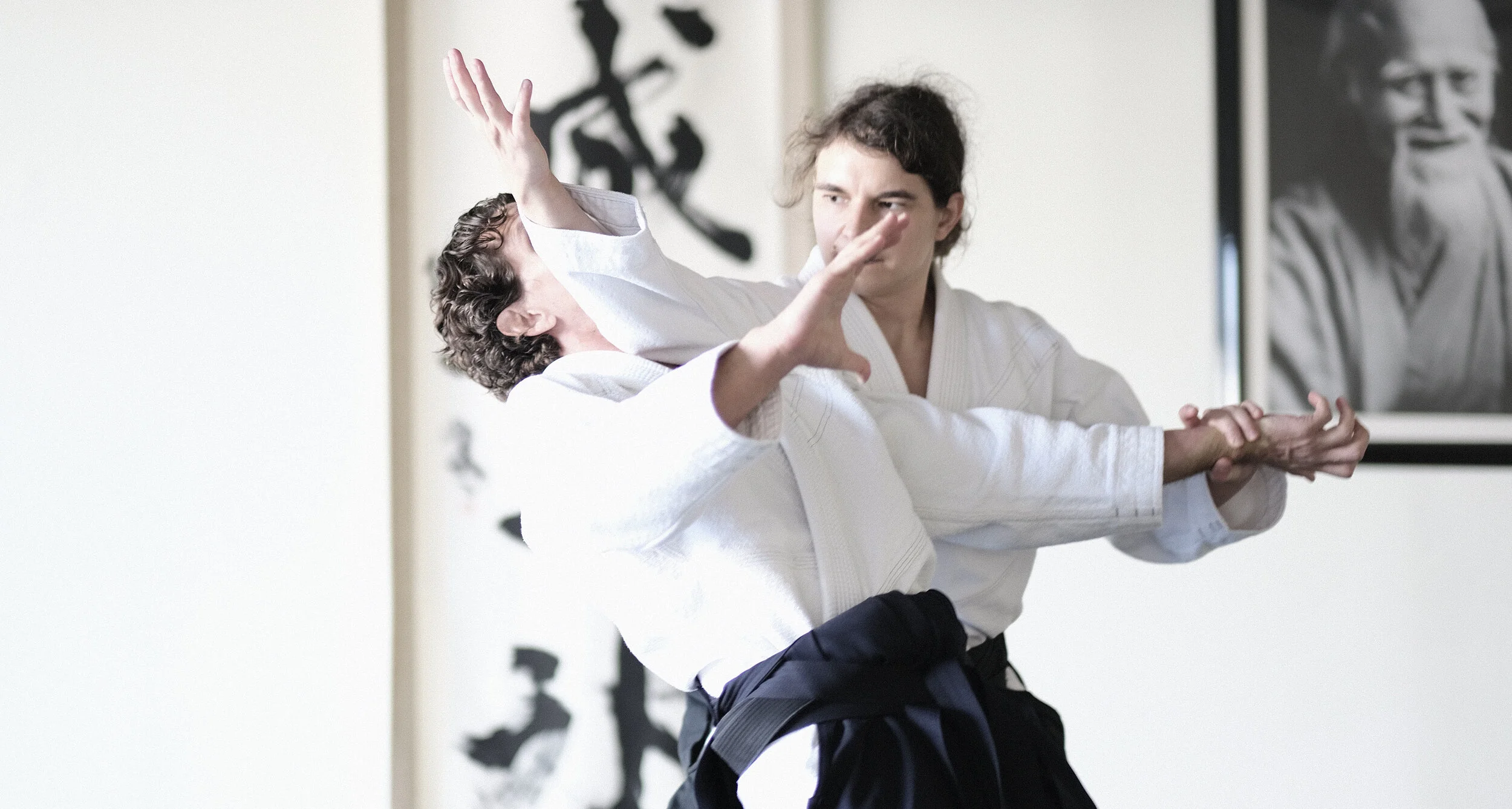Empowering the Next Generation of Code Warriors
How the revolutionary martial art of aikido can be a game-changer for STEM education.
It’s no secret that technology skills play a powerful role in our society and many great organizations are equipping kids from every socio-economic and ethnic background with STEM skills.
We’re making big investments in STEM education, and rightly so. Building technical literacy creates economic and social mobility for kids as they transition into adulthood and develops skilled engineers and scientists who keep our country at the leading edge of innovation. Many large companies support STEM education organizations, like the amazing nonprofit, Girls Who Code - both as a way to do social good, and pragmatically, to create a pipeline future of engineers.
But tech skills are not enough. Of the 16 skills identified in a World Economic Forum report as most important for the 21st century, 12 are social and emotional skills. —including competency in approaching challenges, emotional intelligence, capacity to collaborate, and character qualities. None of Google’s top 7 characteristics of success at the company are technical skills. They include things such as human perception, empathy, and having the courage to fail. (via CASEL)
Teaching STEM skills to our youth is a critically important endeavor, but could there be a method of “cross-training” that can amplify the power of this work, create a better return on our investment in this area, and better equip our STEM students to lead us into the future?
A Case for Budo
Budo is a category of martial arts optimized as educational systems as opposed to hand to hand fighting systems. Budo flourished in Japan as a sort of officer training school to develop character and leadership skills. Budo arts like aikido, judo, and kendo are still practiced around the world today, but most training focuses on self-defense, sporting competition, or preserving the traditions and culture underlying the art.
What if we take these same training systems and integrate explicit training methods and tools designed to apply the lessons of Budo outside the dojo - in students’ academic, family, community, and professional lives?
Imagine a Budo program that is rooted in an authentic martial arts practice but uses modern learning science and technology to supercharge one’s impact in today’s world. A training system that creates stronger technologists who are better prepared for the challenges they will face.
Enter Budo Accelerator
Budo Accelerator, a nonprofit that uses the martial art of aikido to develop leadership skills and elevate our youth, runs such a program, and the results speak for themselves. We teach through the physical practice of the martial arts, supplementary social-emotional curriculum, self-directed project work, and mentorship, which is core to the very soul of Budo. Importantly, everything we do is fully integrated across physical, mental, and emotional dimensions.
Over 60% of our high-school students aspire to have a STEM career and many are enrolled in coding classes and advanced math and science courses. The majority are from low-income communities or historically underrepresented groups. These teens are incredibly smart and have impressive academic performance. But they came to our program because they know they need more.
They believe that STEM skills alone won’t empower them to make the kind of impact they aspire to create in their lives. These students know they will need to collaborate with people, sometimes difficult people, to achieve great outcomes. They know that now, and into adulthood, they need to be able to manage their anxiety, demands on their time, negative side effects of social media, and the long-term physical and mental health problems that come from too much screen time.
Budo is more than a sport or art. It is a worldview- a way of life centered on daily training and a relentless drive to develop new skills and abilities and apply them in every area of life - both for personal development and the betterment of society.
“Aikido is about creating harmonious outcomes in the face of opposition. These same principles apply in the business world. Getting this training early sets up students to build positive relationships, work with colleagues constructively, and to be confident when facing challenges.”
Sumit Gupta, VP of AI Strategy & CTO, Data & AI @ IBM. Budo Accelerator program speaker.
Using Budo as a foundation, we’ve built a curriculum centered on 4 interrelated areas: self-insight, empathy (knowledge of self and knowledge of others), autonomy, and connection (actualizing one’s potential independently and with others). This framework develops resilience, empathy, collaboration skills and leadership presence.
Here’s some detail on just a few of the ways Budo training can amplify the potential of our next generation of STEM leaders and create better ROI for the investments our society is making in their development:
Resilience
Resilience is a critical attribute for individuals, teams, and organizations. It creates capacity to manage stress and anxiety, both in calm and in conditions of severe adversity. It’s widely known that breath control is a powerful way to control one’s mood and emotions at a biochemical level; almost every relaxation, calming, or meditation system developed throughout human history relies on breathing as the lowest common denominator. The practice of Budo also teaches breathing methods, but uses techniques that were originally designed to keep warriors calm on the battlefield.
Unlike many other breathing systems, Budo not only teaches techniques to students, but requires that they put them into practice in high-pressure physical, emotional, and mental interactions. Students are not merely sitting in a quiet, comfortable, safe space doing breathing exercises. After they learn the fundamentals, they must apply them when someone is swinging a training sword at them at high velocity, or while in mid-air as they absorb the force of a powerful throw. After training in this kind of crucible, students find it much easier to use breathing techniques to regulate their mood and anxiety in social and academic settings. Better emotional awareness and regulation result in a more resilient human being, which leads to improved decision making, adaptability, and better performance under pressure.
“Budo training has challenged me to stretch myself beyond my comfort zone. It’s really something I look forward to and it’s a great way to try something new. I found it fascinating to observe how applicable it is in various aspects of life, such as learning how to adapt and respond quickly to new information. Being a part of this program has helped me develop the courage and confidence to find unique ways to problem solve and overcome any obstacle in my path.“
Isha, Budo Accelerator and STEM student. Age 16.
Empathy
Empathy, or perspective taking, is an integral quality of leadership and an essential attribute for a member of a high-performing team to possess. Just ask Google. Empathy is also a core focus of social emotional learning (SEL) which is known to be a key pathway out of poverty that provides economic mobility for under-resourced students.
Regardless of one’s understanding of empathy and how to use it for good, it can’t be put into practice without the ability to accurately perceive others. Sitting in front of a computer screen trains perception in a very specific way, but in doing so, it weakens one’s ability to perceive the things critical to creating successful human interactions. Even something as simple as eyesight is impacted. Staring at a screen focuses the lenses of the eye at a fixed distance for extended periods of time and does not demand that vision is focused at different ranges or levels of detail.
Every other sense is equally narrowed in computer work. On the other hand, all of these senses are stimulated and strengthened through the practice of Budo. A keyboard provides little tactile variability and sitting in a static position provides little vestibular variation, unlike the rich variety of sensory inputs and perception demands of martial arts practice. Through training with others, one learns to read their mental, physical and emotional state through visual observation, through touch, through the nuances of one’s voice, their breathing, and through their eye movements and posture. This kind of perception is an invaluable asset in reading others, a prerequisite for empathy, constructive collaboration, and leadership.
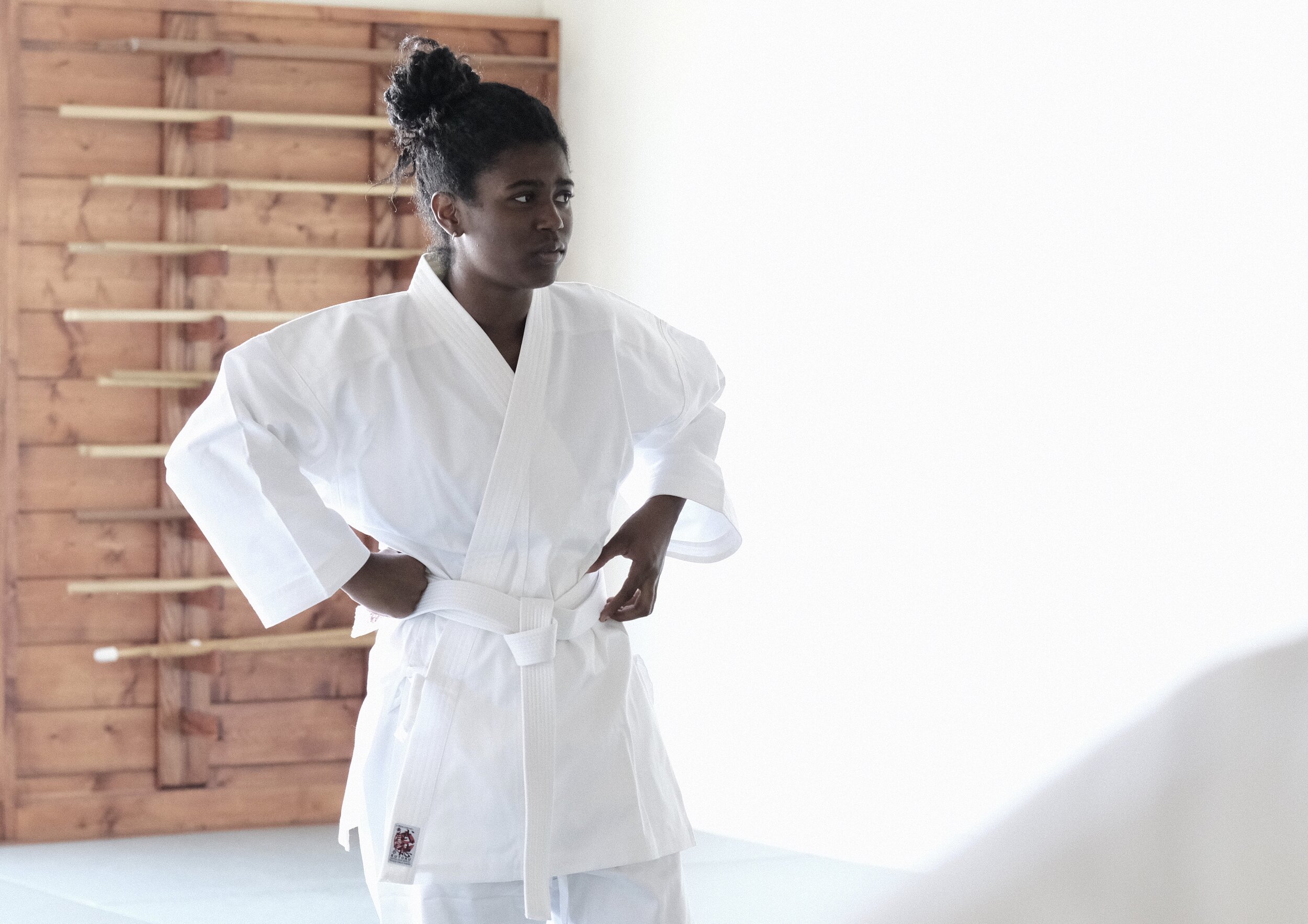
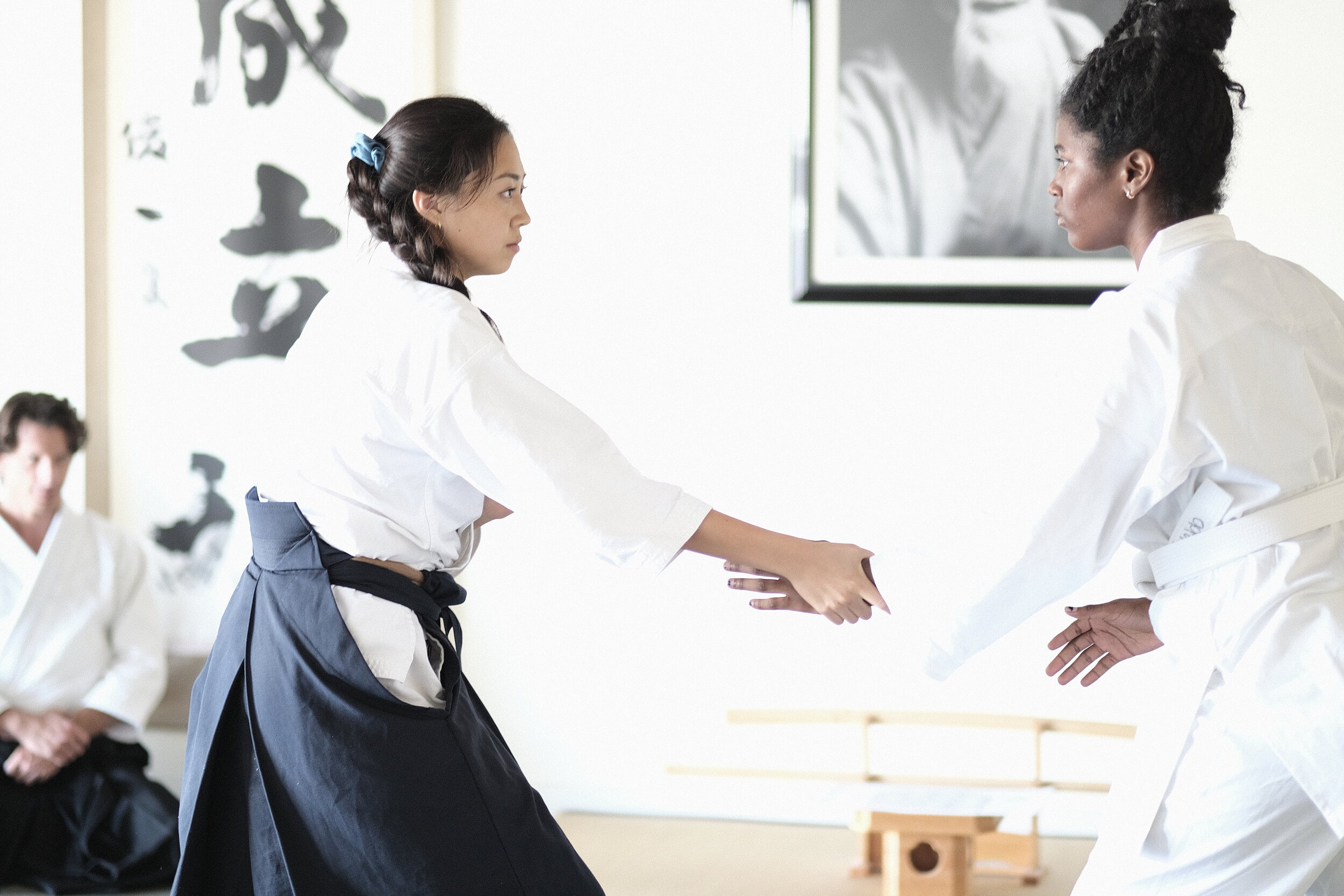
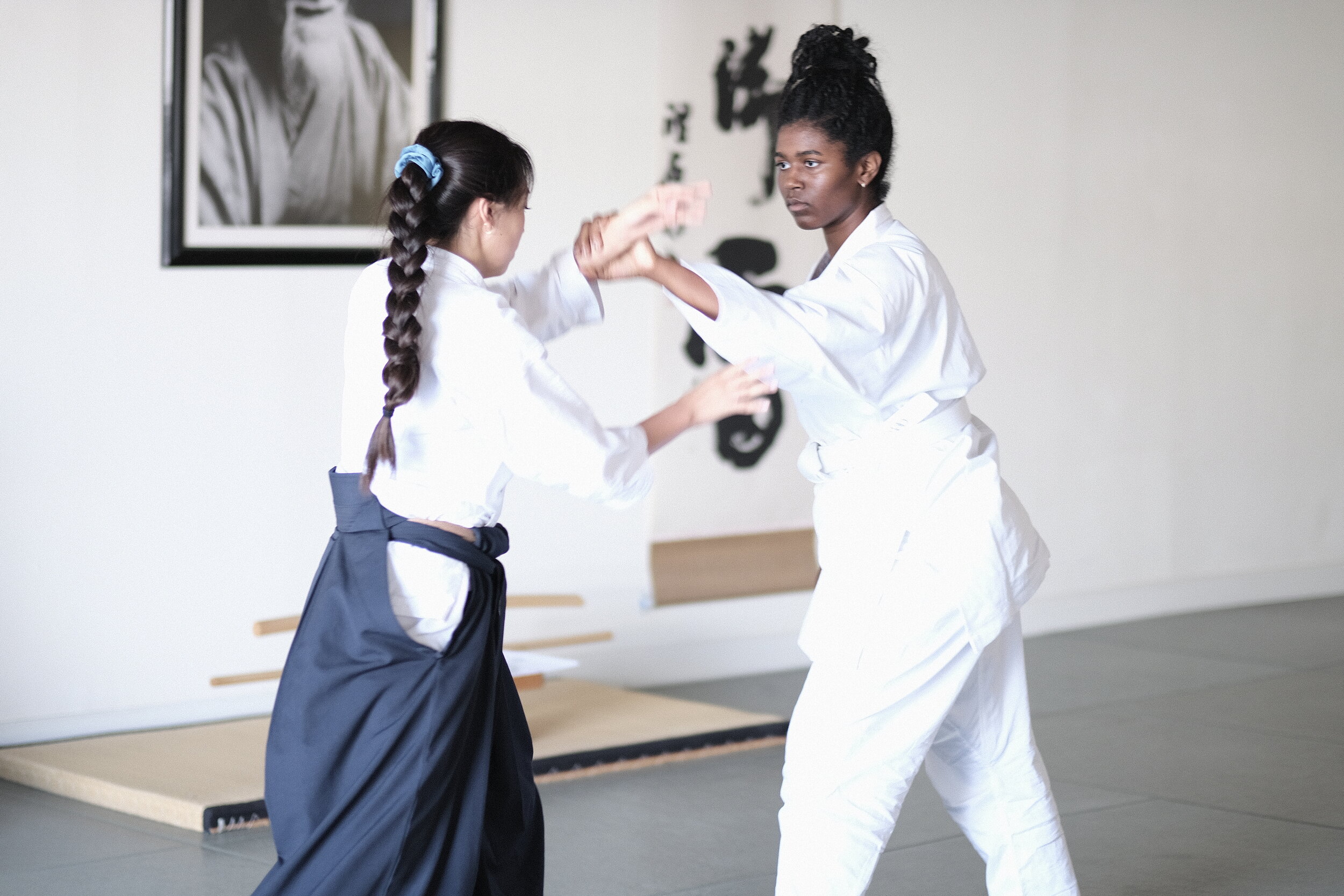
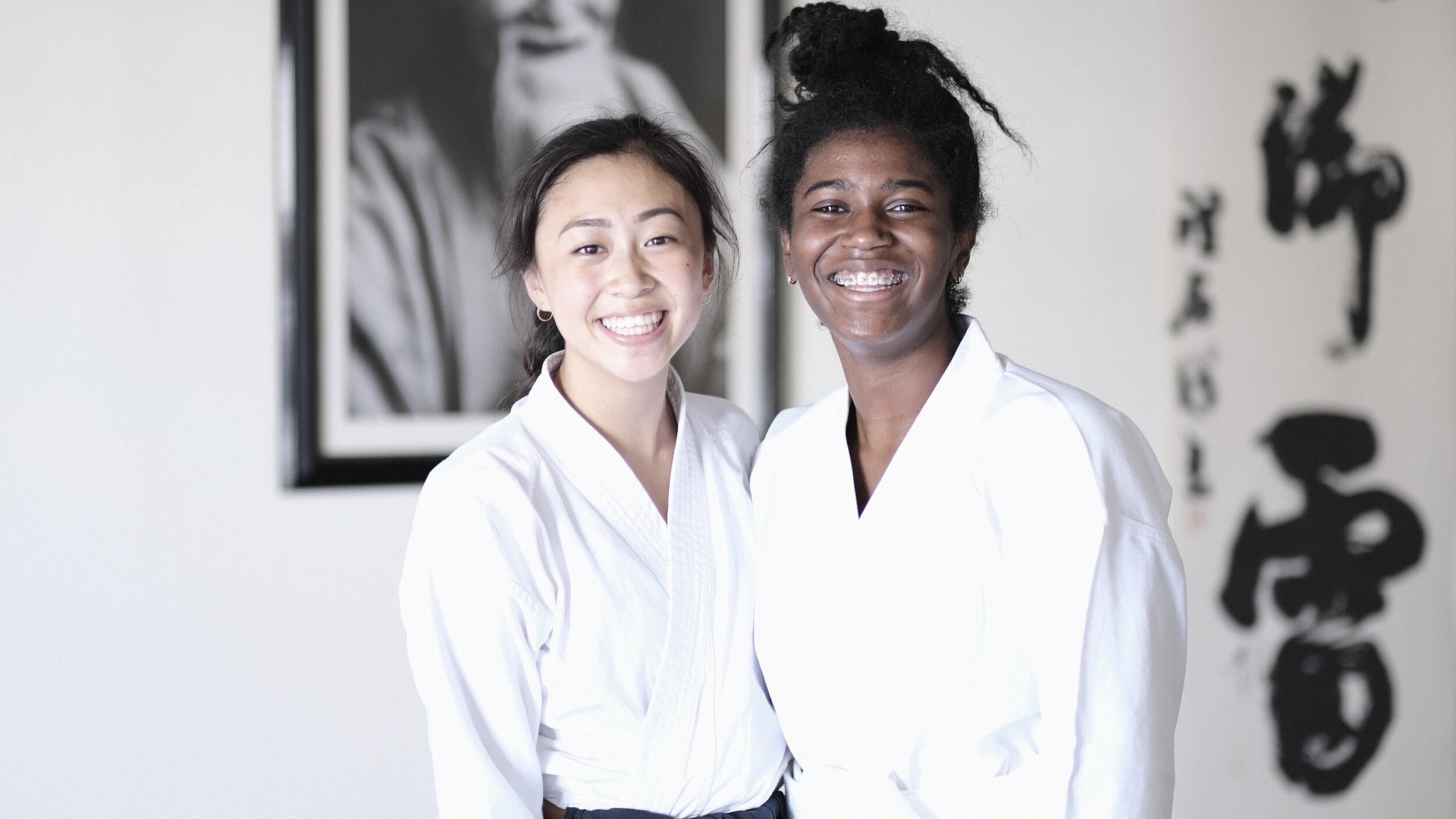
Leadership Presence
Budo teaches “kamae,” a Japanese term often translated as “posture.” But in actuality, it’s something far more profound and impactful. Kamae is the organization of one’s body and mind to embody a certain set of principles needed for a given challenge or interaction. Kamae training equips a practitioner to stand tall and embody confidence in the face challenge or stress. It also teaches one how to adapt physically and emotionally to embody a subdued presence when called for.
Imagine a 17 year old young man who pairs up to train with a muscular 6’4” 55 year old man who is a U.S special forces veteran. Later, the 17 year old pairs up with a new beginner, a shy 14 year old girl who needs to build confidence. A different kamae is needed in each situation. Budo trains people to be sensitive to the circumstances and adapt their physical and emotional “stance” to create the most positive and constructive human interactions.
Respect, attention, compassion, authority, yielding, acceptance, and trust, are all able to be projected through one’s kamae. With this ability, one can use their perception and empathy to judge what’s necessary in any given human interaction and then shape themselves, physically and emotionally to embody that. This kind of ability has obvious applications as an “anti-bullying” tool, but more importantly as a leadership asset that can be used to calm, inspire, or unify others - even in the face of conflict or hardship.
With an understanding of the principles of aikido, and a strong leadership presence, one can create constructive collaboration dynamics among people with vastly different positions and perspectives.
“Women in tech are known to experience many kinds of mistreatment in the workplace. However, I’ve always been taken seriously, respected, listened to, and credited for my contributions. It may just be luck, but I credit this to my kamae, which I’ve developed through over 15 years of aikido training. Presence matters.”
Anastasia Shuba, Ph.D, engineer @ Broadcom, and Budo Accelerator mentor.
Pulling it all together
Traditional Budo training builds physical and emotional resilience, increases perception and sensitivity to oneself and others, builds the capacity to regulate one’s own emotions, puts students in positions of real power (where they could seriously injure another -physically and psychologically) and trains them to wield it responsibly, with regard and respect for others - even those whom they may not like or agree with.
We’ve found that integrating this training with a layer of online curriculum that provides explicit training methods and tools to apply these skills and abilities in academic, social, and professional settings, makes for great leaders. In our Budo programs:
94% of students demonstrated gains in creativity and innovation.
88% of students demonstrated gains in communication, critical thinking, and problem solving.
82% of students demonstrated gains in collaboration and goal orientation.
88% of students develop good or great knowledge in public speaking, time management, and job interest exploration.
88% received encouragement to work through difficult problems.
82% received the opportunity to engage with people who are different from themselves.
As a bonus, teens love the training. Most high school students, especially those with an affinity for coding and STEM, love video games and the sci-fi fantasy genre. The martial arts are pervasive in these mediums. Who doesn’t want to learn how to wield a sword like their favorite anime character, or to throw someone like a secret agent?
We think it’s a win for everyone. It’s an unexpected approach to cross-train STEM students with specialized programs rooted in the ancient ways of Budo, but it’s one that turns out to be surprisingly effective.
For those who are making investments in building our next generation of code warriors - perhaps it’s time to start thinking about the warrior part in a more literal sense.
If you have comments, ideas, or would like to discuss collaboration opportunities , let’s talk!

